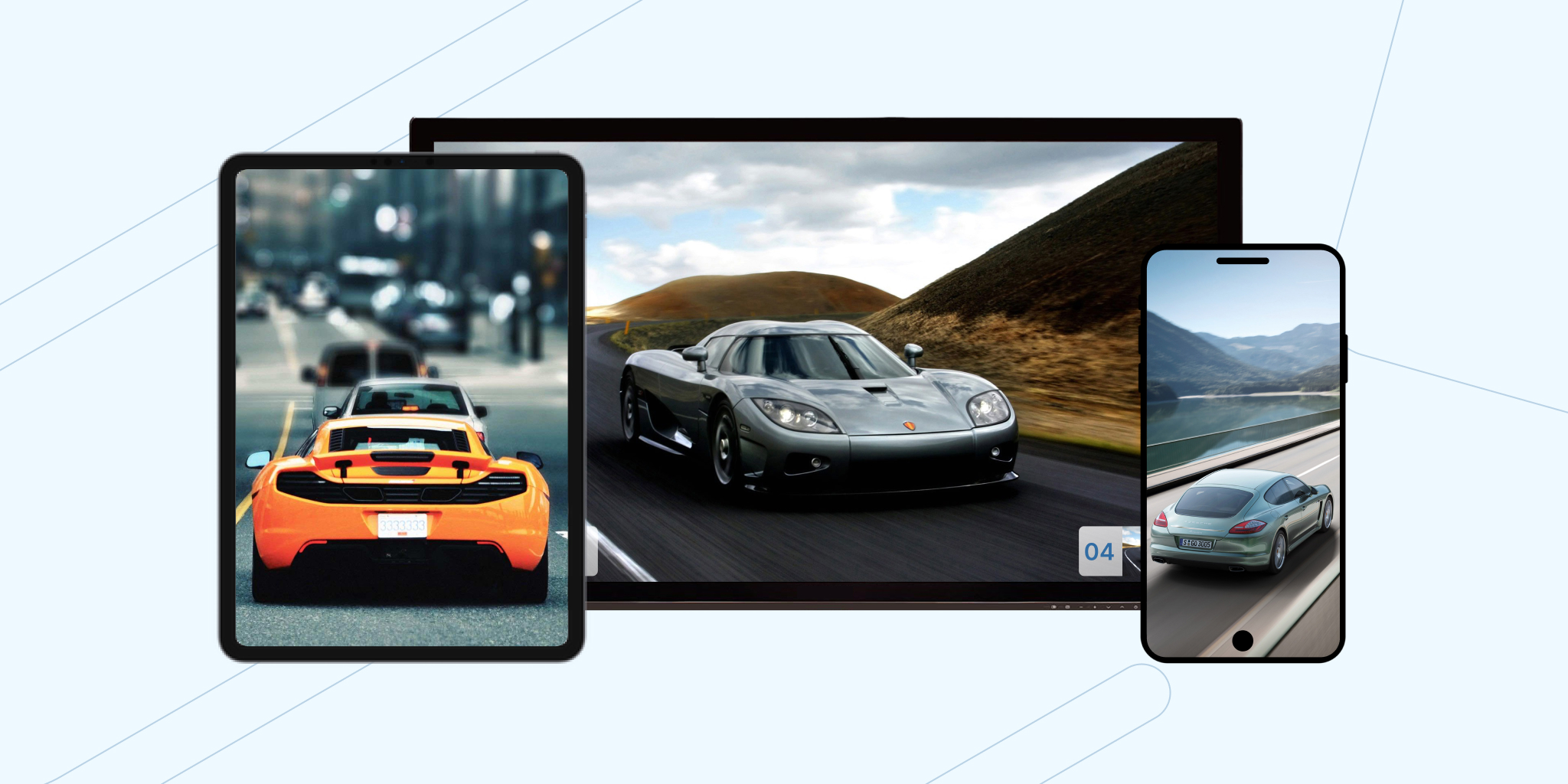How does Programmatic Advertising Work?

Published on December 27, 2023
Share this article




With 91% of digital advertising inventory (or available ad space) in the U.S. purchased programmatically this year, buying traditionally (via human negotiation) would warrant a jaw drop from the majority of today’s advertising industry. Like a 13-year-old daughter would tell her father after he asks what TikTok is, “Get with the program!” applies here too. In this case, the programmatic program.
Although programmatic advertising has dominated the ad buying universe for the past few years, it is still largely misunderstood. Here, we’ll break down the basics of programmatic advertising, ending with why EMG exclusively buys streaming ad inventory programmatically.
What is Programmatic Advertising?
A loaded question, but great for understanding the current advertising ecosystem. In a single sentence, programmatic advertising can be defined as the use of data and automation to buy ad inventory.
Programmatic technology uses data insights that can identify any exact audience that an advertiser wants to target. This data allows advertisers to zoom in on their relevant audiences within their market, then show only those individuals their advertisements, skipping all uninterested viewers. Advertisers just need to select their targeted audience groups, then let automation technology find them across all internet platforms. Workflow automation can purchase digital ad inventory across the internet, from social media, streaming, search, and even digital out-of-home — all defined by the advertiser’s set parameters, and all within less than a second.
Unlike traditional digital advertising methods, where humans manually call a website or TV network to negotiate an untargeted ad buy, programmatic advertising is instantaneous, completely automated, highly-targeted, and cost-efficient. Since its origin in the early 2010s, programmatic’s targeting and automating abilities have taken the digital advertising world by storm.
How to Buy Inventory Programmatically
Advertisers can buy media inventory programmatically in a few different ways. While these methods all automatically upload and deliver the advertisement to the targeted individuals’ available inventory, some require direct communication between the publisher and advertiser before programmatic buying can take place. There are three different types:
Real-time bidding (RTB): Also called open auction, RTB decides inventory prices through an instantaneous auction between any bidder. It is an open auction that allows any publisher or advertiser to participate. This process helps manage and allow large audiences to buy inventory in a cost-effective way.
Private marketplace (PMP): This process is similar to the RTB model but restricts who can participate. Advertisers must be invited to have access to PMPs. In some cases, publishers may also allow advertisers to apply for an invitation and be selected by the publisher.
Programmatic direct: In this process, the publisher avoids auctions by selling media inventory at a fixed CPM (cost per mille — or cost per thousand impressions) to a selected advertiser or multiple advertisers. This process excludes ad exchangers, giving the publisher and advertiser more control. It is a slower process, needing communication for approval between the publisher and advertiser. But from there, the ad upload and delivery become automated.
Programmatic Data and Targeting
Introduced earlier, programmatic advertising uses data to target specific audiences. These data insights can identify any exact audience that an advertiser wants to target. These audiences are filled with users (who are real people), all with a commonality: behavior, location, interest, etc. These commonalities can be anything — people who are “in-market for a luxury car,” people who are “living in West Los Angeles,” or people whose “car lease is expiring in the next 30 days.”
This audience insight is sourced from identifiers, or IDs, which are essentially data groupings that host information on certain users (interested car-buyers, new parents, etc.) that can be used in identity graphing to target users across any medium. The most common IDs currently used in programmatic targeting are Unified ID 2.0 (UID2), Mobile ad IDs, Hashed emails, RampID, CTV IDs, and cookies. Cookies, a popular but controversial ID, are increasingly threatened by privacy regulations. Despite common fear among marketers, cookie deprecation is not a cause for alarm; technology platforms have established powerful identity resolution graphs that don’t rely on cookies for audience targeting.
Media buying services (like EMG), buy and test various identifiers on data management platforms (DMPS), then create custom audience groups (composed of many audience segments). From there, automation and identity graphing can identify these selected audiences across all chosen mediums and buy their inventory when it goes up for bid, which we’ll touch on next.
The Programmatic Platforms to Know
How and where does automation happen? The programmatic ecosystem is comprised of three main platforms:
- Sell-side platform (SSP): This is an ad technology platform that allows ad publishers to sell, manage, and optimize their ad inventory (display, mobile, and video) to potential buyers automatically in real time. It connects publishers to interested buyers, either directly through DSPs (see below), or through intermediate ad exchangers (see below) that help manage real-time-bidding. This platform automates inventory selling while helping publishers maintain and maximize their inventory revenue.
- Demand-side platform (DSP): This is a software platform that allows agencies and advertisers to buy ad inventory with automation. From a DSP dashboard, an advertiser uploads creative, sets audience targeting, and confirms the budget. The DSP then scans through its network of publishers (on SSPs) for inventories that match the advertiser’s parameters, then makes a bid for placement. If the bid is won, the bid is resolved and the ad is uploaded through the DSP to the SSP, then delivered and played on the chosen inventory — all within a tenth of a second.
- Ad Exchanger: This is the “middleman” between the SSP and DSP. An ad exchanger allows SSPs and DSPs to “communicate” (automatically) with each other so publishers can sell, and advertisers can buy through real-time-bidding. It manages the RTB auction process for ad inventory, managing both the advertiser’s bid parameters, the bidding process, and the publisher’s inventory sale. This occurs within a tenth of a second, opening the auction right before the inventory is due to run.
Once the advertiser sets their parameters, the SSP, DSP, and Ad Exchanger work together to automate a campaign’s media buying. Inventory is bought per impression, ensuring each impression is delivered directly to a targeted individual within the advertiser’s selected audience configuration. This process knows and manages the campaign’s flight duration, frequency caps, and time of day selections, all while ensuring the advertiser’s budget will be delivered in full throughout the campaign flight.
Programmatic is Better: The Main Advantages
The older and alternative method to programmatic advertising is endemic advertising. Endemic advertising, or the process of manually negotiating with channels and buying ad impressions in bulk, is dying fast, alongside its cable TV companion. With limited targeting (channel-wide), expensive inventory (bulk impression deals only), narrow transparency (who saw your ads?), and no attribution measurement (how many sales did your campaign generate?), endemic advertisers don’t know the impact their campaigns are having or how to improve them.
Programmatic advertising is clearly the outstanding advertising method offered today, reflected in its monopoly of the advertising ecosystem. Laid out below are the top advantages of programmatic:
- Programmatic inventory buying ensures efficiency, meaning marketers don’t need to manually negotiate with publishers, saving them substantial time and energy. Programmatic buying streamlines the process by automating the media buying through real-time-bidding (RTB). The cost-efficiency is soaring as well, only spending media dollars on meaningful impressions because of its advanced targeting capabilities.
- Backpacking off that, programmatic conducts granular targeting, reaching audiences based on specific, highly predictive audience data identification and buying per targeted impression.
- It guarantees transparency because advertisers know exactly where their ads will appear and have confidence it is following their set parameters.
- Lastly, programmatic offers revolutionary measurement, offering real-time measurement by following the user from their initial impressions through their downstream activities to attribute conversions to impressions.
Programmatic Advertising on Streaming
87% of Connected TV (CTV) ad inventory is currently purchased programmatically. This percentage is up almost 30% in two years. CTV was a mile behind the rest of the advertising world and is finally catching up. Since Connected TV is a relatively new medium and is battling the reputation of linear TV, it has adapted behind the rest of most digital mediums (social media, search engine, etc.). However, streaming is quickly catching up following the surge of viewers cutting the cord and eliminating cable TV completely (9.3 million last year).
Digital Audio advertising is even farther in the rear view, with 20% of digital audio ad inventory bought programmatically in 2022. Also launched in the late 2000s, digital audio streaming has been picking up popularity in recent years, and its programmatic abilities are catching up as well.
Programmatic advertising on streaming mediums follows the same process detailed above. Consumers begin to play an episode, movie, podcast, playlist, etc., then the publisher’s (Hulu, Pandora, Spotify, etc.) ad impression instantly goes up for auction on one or multiple SSPs. Then, the DSP bids on behalf of the advertisers for that impression (considering the campaign’s guidelines and creatives). This bidding occurs either through an Ad Exchanger or directly through a DSP. The Ad Exchanger or DSP automatically assigns the CTV or audio impression to the winning bidder, which is normally the advertiser offering the highest price point. Then, the ad is uploaded from the DSP through the SSP to deliver to the Connected TV or audio device. This all happens in under a second!
Why EMG Buys Inventory Programmatically
The better question is why wouldn’t EMG buy programmatically? It’s clear that programmatic advertising runs laps around older, endemic methods, yet it took most streaming advertisers almost a decade before they started buying programmatically — except EMG. Digitalizing and automating media buying has allowed EMG to create unprecedented media efficiency with Connected TV and audio streaming advertising. While streaming advertising is late to the programmatic trend, EMG has been buying CTV and digital audio inventory programmatically for over five years.
With an expertise in both programmatic media buying generally, and particularly on Connected TV and digital audio, EMG has curated highly predictive audience configurations for automotive, paired with private access, top performing streaming inventory that generates the highest engagement, completion, and conversion rates. Other advertising providers just now hopping on the programmatic bus are just beginning these optimizations and curations. This is one of many reasons why EMG campaigns are 8.5x more efficient than the national average automotive advertising efficiency — averaging 30% of our targeted audiences walking onto a dealership lot within 90 days of seeing the dealership’s advertisement.
Programmatic streaming advertising isn’t new to us. Get five years of programmatic experience and expertise on streaming with EMG. Get started today.
Related Blog Posts

Why Car Dealerships Should Advertise on ...
Automotive advertisements are meant for the flat-screen. With their compelling,

Presenting EMG’s Second Annual Str...
Thought leaders in streaming advertising and the retail automotive digital envir

CES 2024 — All in. All On....
The Consumer Electronics Show® (CES) is the arena for global innovators and bus

CTV Wrapped — Your 2023 Connected TV a...
Copyright © 2024. All Right Reserved














